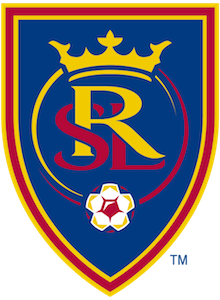Salt Lake City may become a hub for rail routes to Los Angeles, Seattle

18/03/2024 14:00
Utah may have missed out on funding to study adding trains to Boise and Las Vegas, but Salt Lake City is still in the conversation for two other rail routes.
The Federal Railroad Administration (FRA) identified several preferred routes in February for its long-distance service study, and two routes — Denver to Seattle and Denver to Los Angeles — include Salt Lake City as a stop along the way.
The FRA will identify next steps and "recommended actions" from the study at some point this spring. But it would be "several years" before any selected routes come online, said Jordan Backman, planning manager for the Utah Department of Transportation.
"We are now on the map in a significant way on the long-distance preferred route network," said Jay Fox, Utah Transit Authority executive director, during a February board meeting.
One of the rail routes would begin in Denver; make two Wyoming stops in Cheyenne and Rock Springs; then would continue into Utah with stops in Ogden and Salt Lake City. The train would head south through Las Vegas; Barstow, California; and end in Los Angeles, California, according to the FRA's February presentation.
The trip from Denver to Los Angeles is projected to take about 33 hours, the presentation states.
Another rail route would start in Seattle, Washington, and make three stops in Portland, Oregon, then Boise and Pocatello in Idaho, before two more stops in Ogden and Salt Lake City. From Utah, the train would go to Grand Junction, Colorado, before arriving at its destination in Denver, Colorado.
The Seattle to Denver route is projected to take about 40 hours per trip — about 16 hours shorter than the current train ride, which requires passengers to travel down the west coast from Seattle to Sacramento on one train, then change trains to travel from Sacramento to Denver, according to an FRA presentation.
"The final workshop for that will be held in the spring," Backman said. "From there, it will be a matter of which routes get prioritized."
Last year, two new route proposals that included Salt Lake City were submitted to the Corridor Identification and Development Program. That initiative is intended to create a pipeline of intercity passenger projects under the 2021 federal Bipartisan Infrastructure Law, which invested in rail improvement.
The program would have allotted $500,000 to study how best to connect Salt Lake City to Las Vegas by passenger rail. The Idaho Transportation Department separately applied to study a proposed rail line connecting Boise to Salt Lake City, which UDOT supported, with Utah's capital city acting as a bridge between the potential projects.
But UDOT's proposal for the Salt Lake City to Las Vegas route was rejected, and the Idaho Transportation Department's application was submitted to the wrong program — and eventually disqualified, as was first reported by BoiseDev. Officials are hopeful they can submit the application again once the program eventually reopens, a spokesperson with the Idaho Transportation Department said.
"It was just an unfortunate situation for that one," Backman said. "For the UDOT application, we submitted to the correct program ... but we were not awarded the grants."
Across the country, about 90 such grant applications were submitted. Federal officials ultimately chose 69 projects to receive grant funding, according to a news release from the Federal Railroad Administration.
In a debrief with UDOT, the FRA told the agency it would've liked to see more quantitative data in the proposal — like ridership projections and capital cost estimates — which UDOT "didn't have available" at the time its proposal was submitted, Backman said.
The agency also wanted to see that UDOT had identified funding sources for the later phases of the program, Backman added. UDOT may be able to reapply for the grant program in 2025, but it depends on when the FRA releases a notice of funding opportunity.
"The benefits of [the long-distance service study] are huge because that's federal rail taking the lead on that — and that's using federal dollars," said John Tomlinson, communication director for the Idaho Transportation Department.
"We're excited about the opportunity to think that federal rail's looking at this longer-range transportation rail option, because it's going to affect so many states," he said, "and ultimately, if that goes through, it would restore that service from [the west] coast to out to Denver, Salt Lake — several cities across the region."


